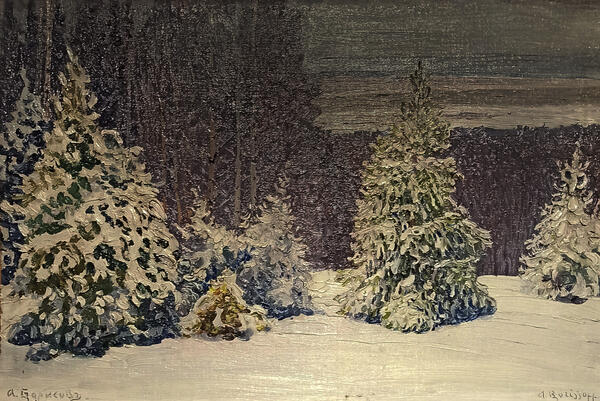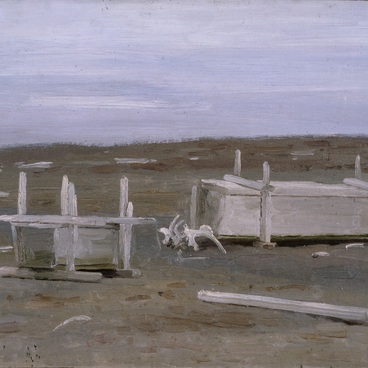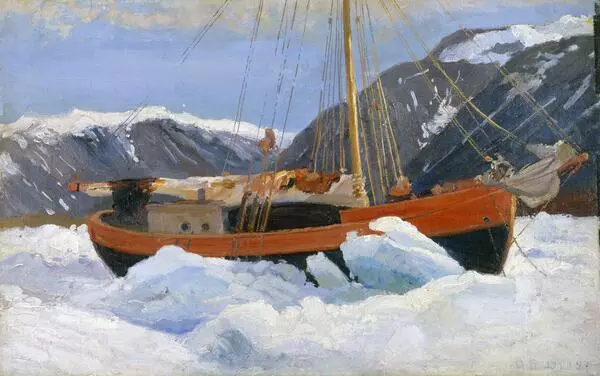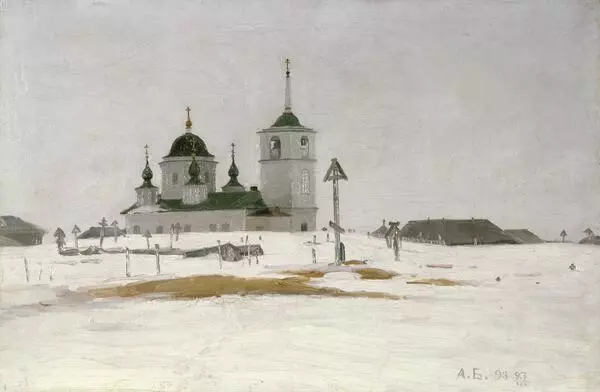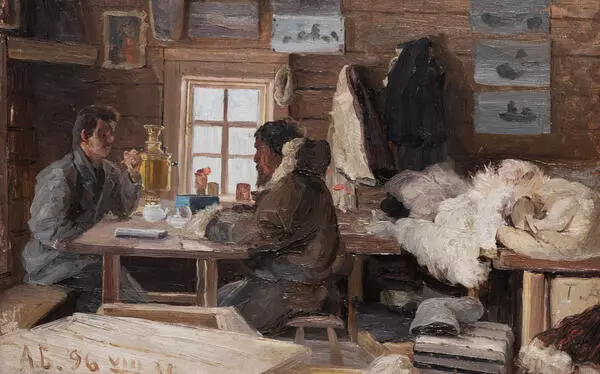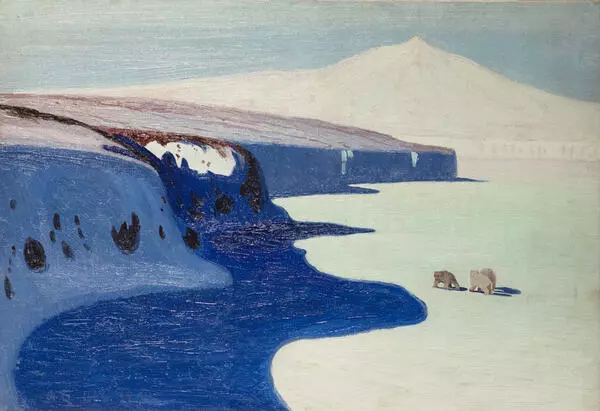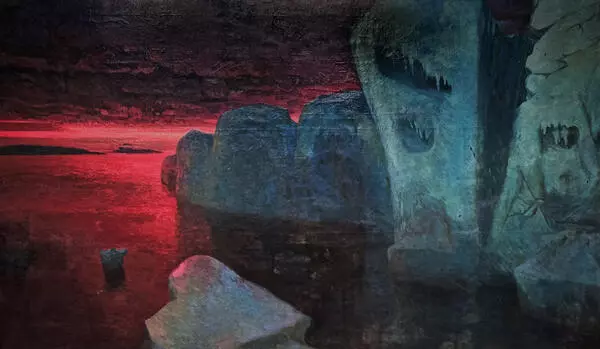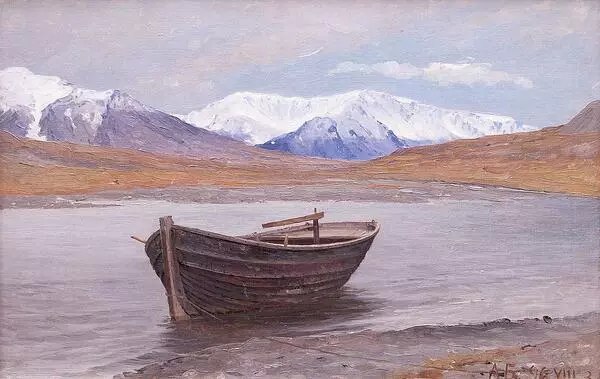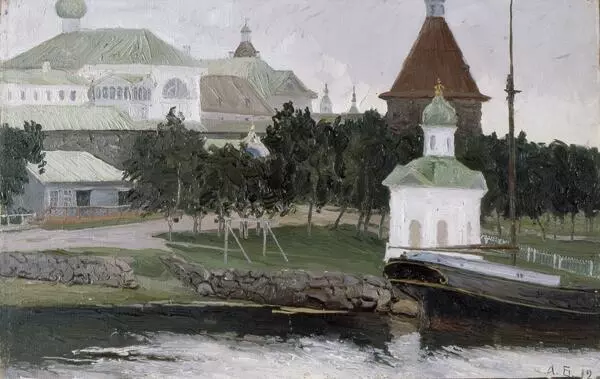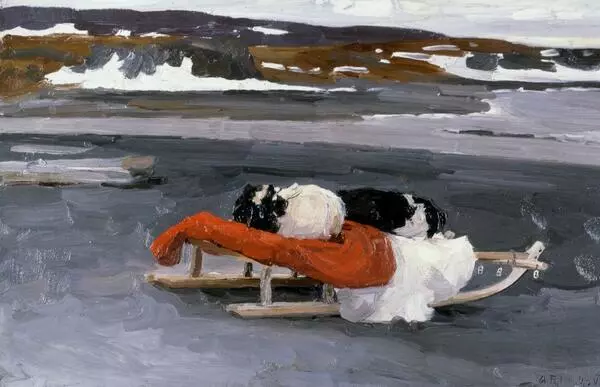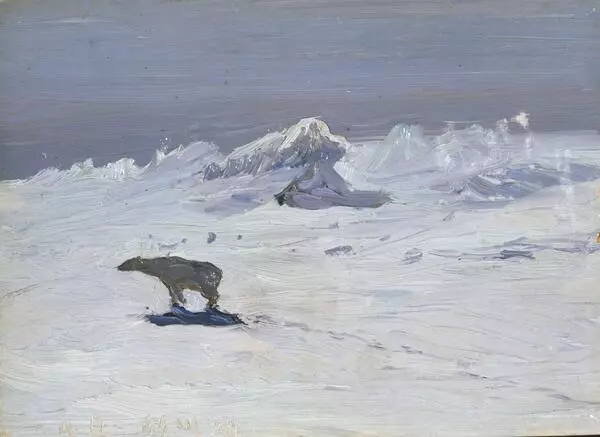The picture Surroundings of the Country House in the Winter shows sparkling snow covering the dark green of fir paws. In the ocher of the thin birches, some last year’s leaves are seen, and behind them, a blue-purple expanse of the land. The artist creates a feeling of integrity using a vast range of hues within a limited array of colours.
A faithful rendering of the winter scenery is Borisov’s hallmark. It was formed by three things: a two-year training in Ivan Shishkin’s class, a three-year training in Arkhip Kuindzhi’s workshop and many years of experience. The painter spent most of his life in the North, constantly perfecting his skills in the winter landscape painting. He learned to combine Shishkin’s eye for detail and Kuindzhi’s feeling of light.
In the beginning of 1914, Borisov organized an exhibition of his latest pictures. His new works showed new motifs and a new style. The technique was simpler, yet more elegant and sophisticated. Borisov was studying the visual effects of the snow, learning to see the multiple sparkling tones and overshadows of the illusorily monotonous snow cover. To depict it, you have to be born in the North. Capturing the stark poetry of the northern snow is what makes Borisov’s pictures valuable.
The woods surrounding his house in Krasnoborsk village often fed his creativity. Everything he saw there presented a wonderful sight. Even the view outside the window in his studio was begging to be painted. Sometimes Borisov arranged to put small spruces in the foreground of the view. The trees were put in the snowbanks, creating a new landscape composition.
This is what an art critic wrote about Borisov’s work: ‘There were many artists that used to paint the winter scenery, and many of them painted it masterfully. In their pictures, the snow was so realistic it seemed it would crunch if you reached for it. But there was no winter, the mighty Russian winter that we Russians know so well. Borisov does depict the Russian winter. It is the winter itself, not a picture of it.’
A faithful rendering of the winter scenery is Borisov’s hallmark. It was formed by three things: a two-year training in Ivan Shishkin’s class, a three-year training in Arkhip Kuindzhi’s workshop and many years of experience. The painter spent most of his life in the North, constantly perfecting his skills in the winter landscape painting. He learned to combine Shishkin’s eye for detail and Kuindzhi’s feeling of light.
In the beginning of 1914, Borisov organized an exhibition of his latest pictures. His new works showed new motifs and a new style. The technique was simpler, yet more elegant and sophisticated. Borisov was studying the visual effects of the snow, learning to see the multiple sparkling tones and overshadows of the illusorily monotonous snow cover. To depict it, you have to be born in the North. Capturing the stark poetry of the northern snow is what makes Borisov’s pictures valuable.
The woods surrounding his house in Krasnoborsk village often fed his creativity. Everything he saw there presented a wonderful sight. Even the view outside the window in his studio was begging to be painted. Sometimes Borisov arranged to put small spruces in the foreground of the view. The trees were put in the snowbanks, creating a new landscape composition.
This is what an art critic wrote about Borisov’s work: ‘There were many artists that used to paint the winter scenery, and many of them painted it masterfully. In their pictures, the snow was so realistic it seemed it would crunch if you reached for it. But there was no winter, the mighty Russian winter that we Russians know so well. Borisov does depict the Russian winter. It is the winter itself, not a picture of it.’

